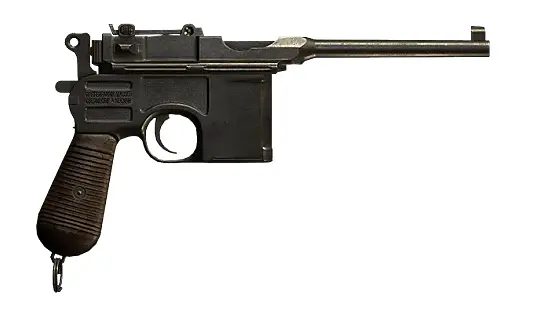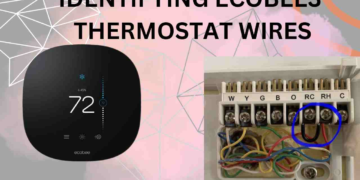Modern technology was used in the battle of Tannenberg. Many of the modern weapons of that time were used in the battle of Tannenberg.
Following is a brief about the weapons that were used in this battle;
- Rifles
- Hand Grenades
- Mortars
- Machine Guns
The list of the mentioned weapons was utilized in the Battle of Tannenberg.
Technology Was Used in The Battle Of Tannenberg
The Machine Gun was created in 1914. Advance weapons require the trigger to be pulled only a single time. Many rounds can be subsequently terminated in only one moment.
In the Battle of Tannenberg, these weapons used to overheat quickly and wouldn’t work when required.
Another weapon that was used broadly in this fight was the “flamethrower”. This weapon could be utilized by only one officer and was a firearm that heaved discharge.
It had two chambers, one containing nitrogen and the other petroleum. The mix of these two synthetic substances created fire. This weapon was utilized in short proximity battles.
Read here : What Technology Was Used In The Battle Of Verdun?
What Are the Different Rifles Used In The Battle of Tannenberg?
Below is the list of weapons or the technology that was used in the battle of Tannenberg;
- Mauser Gewehr 98
- Mosin Nagant M91
- Luger P08 Pistol
- Mauser C96 Pistol
- M1915 Stielhandgranate
Continue reading about the features of these weapons.
1- Mauser Gewehr 98
Mauser Gewehr 98 is of Bolt-Action weapon with the capacity of 5 in a magazine having dimensions of ammo 7.92×57mm Mauser requires some attachments which are a Trench Magazine, Bayonet, and Stripper Clips.
Mauser rifles are likely the main weapons that were utilized by the German armed force during WWI. Among them, the Gewehr 98 model is certainly the best weapon in Tannenberg.

2- Mosin Nagant M91
Mosin Nagant M91 is of Bolt-Action weapon with a capacity of 5 in a magazine having dimensions of ammo of 7.62×54mm requires some attachments which are a Trench Magazine, Bayonet, and Stripper Clips.
Very much like Mauser rifles in the German armed force, Mosin-Nagants were the most generally utilized rifles by Russian officers during WWI.
This weapon is basically the same as the Gewehr 98 model regarding taking care of and reason, so on the off chance that you wind up on the Russians, get this one decisively.
Likewise, there is a variation of this rifle in Tannenberg: the short manual rifle “Dragoon,” which is a cut rendition of an M91, and subsequently, not as powerful.

3- Luger P08 Pistol
Luger P08 Pistol is a semi-automatic pistol with the capacity of 5 in a magazine having dimensions of ammo 9x19mm Parabellum.
This Luger was vastly used by Germans in WWI because of its ergonomics and switch-locked pull-back worked self-loader component, one of the first of its sort.
It was planned with a switch lock activity, which utilizes a jointed arm to lock, instead of the slide activities of pretty much every other self-loader gun.
Read here : Which Technologies Combine to Make Data a Critical Organizational Asset?
This uncommon weapon is extremely exact and best when battle follows in the channel lines. Make a point to shoot numerous rounds at foes in a short measure of time to cause the worst damage.

4- Mauser C96 Pistol
Mauser C96 is a semi-automatic pistol with the capacity of 10 in a magazine having dimensions of ammo 7.63×25mm Mauser.
Mauser, generally known for its series of rifles, delivered an option in contrast to the Luger gun to fill the hole in the enormous interest for this particular sort of weapon in the German armed force during WWI.
It was nicknamed the “Broomhandle” because of its strange hold molded like the handle of a brush, which gives it greater dependability during the fire.
Its long barrel and high-speed cartridge consider a much-unrivaled reach and preferred entrance over most different guns in Tannenberg.

5- M1915 Stielhandgranate
M1915 Stielhandgranate is a hand grenade filled with Trinitrotoluene having a 4.5 seconds friction igniter as its detonation mechanism.
Some of the time you simply need something to get your foes out of the channels. This M1915 explosive is an ideal device for doing precisely that.
The plan of the Stielhandgranate permits the handle to give the player more influence and hence toss it farther.
The erosion system postpones will likewise give you sufficient opportunity to hide after the underlying blast. It’s an incredible instrument to have, so get it prior to wandering into the areas constrained by the Allied powers.

Read here : Which of The Following Technologies Precedes Horsemanship?
Infantry and Weapons of the Battle of Tannenberg
The troopers who did battle in 1914 and the people who took part in the extraordinary offensives of 1918 conveyed emphatically unique hardware.
Besides the standard rifle, which remained basically something similar, the conflict saw the advancement of different sorts of versatile programmed infantry weapons and particularly hand explosives, which became essential hostile weapons for attacking channels and automatic weapon homes.
Maybe the clearest advancement was the renewed introduction of reinforcement as the steel cap, missing from European front lines for a really long time.
The explanation was obvious that in close quarters conflict the chief reason for death was by head wounds, frequently not from projectiles but rather from shell pieces.

The French were quick to issue such protective caps in 1915, yet their Adrien model, in light of the firefighter’s cap, was not sufficient, so warriors actually experienced many head wound sections.
Read here : Why Does The Adoption Of New Technology Tend to Increase The Supply?
By the by, even a decrease of 2-5 % in losses was sufficient to convince others to follow with their own models in 1916, the British “tin cap” and the German “coal leave,” both motivated by various kinds of middle age protective caps.
At the point when the Americans entered the conflict in 1917, their top creators Bashford Dean and Daniel Tachaux delivered a few potential models and reasoned that the best variety would be one that was better formed to safeguard the fighter’s head;
As this looked excessively like the German cap, which was generally owned up to be the best cap of the conflict, it was obviously dismissed by military specialists.
Americans hence wore British-style head protectors (but with an alternate kind of coating for more noteworthy solace) all through the conflict and the 1930s, fostering their own trademark cap in the Second
World War, and lastly during the 1980s got back to a cutting-edge rendition of the initially preferred plan, however utilizing Kevlar as opposed to steel.
Since nearly 70% of losses came about because of shell parts, the lightweight steel body defensive layer was one more chance investigated by the battling countries, however, just the Germans delivered sets as standard issues; the heaviness of exactly twenty pounds a set limited their utilization.











Comments 1